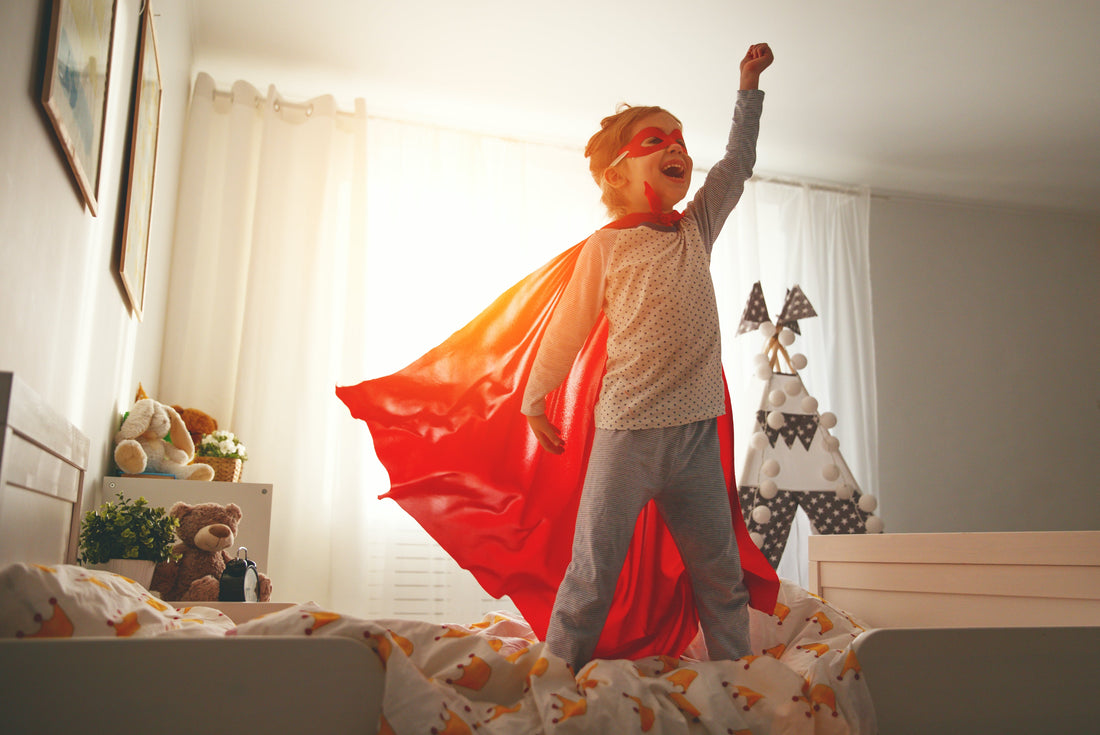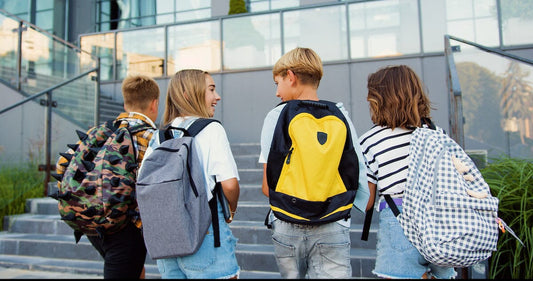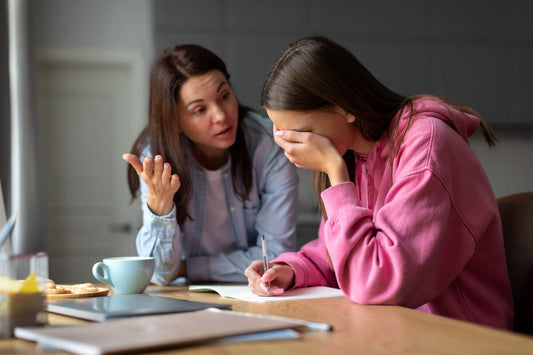When you hear the word “superpower,” you may think of things like traveling through time or using telekinesis, but did you know that anxiety can also be a superpower? By using cognitive reframing, a technique used to shift one’s mindset so they’re able to look at a situation, person, or relationship from a slightly different perspective, children with anxiety can learn to not just accept their worries, but use them to their advantage. Studies have shown that reframing has helped minimize anxiety and depression and enhance quality of life during the COVID-19 pandemic.1 It has even helped individuals struggling with social anxiety and death anxiety.2, 3 Here’s how to help your child with anxiety feel more like Batman or Wonder Woman today.
Identifying Anxiety in Children
The first step in helping your child turn their anxiety into a superpower is identifying it. Many children may not know how to articulate what they’re feeling when they are anxious, but there are several signs and symptoms you can look for.
Signs & symptoms of anxiety in kids include:
- Difficulty concentrating
- Poor sleep
- Low frustration tolerance
- Poor eating habits
- Frequent outbursts and tantrums
- Complaining of headaches or tummy aches
- Restlessness and irritability
- Rapid breathing and trembling
Once you’re able to identify your child’s anxiety and help them notice the telltale signs, it’s important that you encourage your child to talk about their feelings. Gently ask questions about their fears and worries, create a safe space where they can share their concerns, normalize their anxiety, and resist the urge to dismiss their fears. Studies show that supportive parenting can help reduce a child’s anxiety.4
Encourage Your Kids to Accept Their Worry
When anxious kids are taught to ignore their worries or that anxiety is inappropriate, they learn to cope in unhealthy ways, which may include self-medicating with substances or self-harm. According to Renee Jain and Dr. Shefali Tsabary, authors of Superpowered: Transform Anxiety Into Courage, Confidence and Resilience, children should be allowed to honor, validate, and make space for feelings to just be felt. Instead of telling your anxious child not to worry, you should encourage them to “make friends” with their anxious feelings, maybe even giving their anxiety a name and a personality so they can begin a dialogue.5 When anxiety stops being an abstract and overwhelming presence, kids start to see that their worries are less scary and unmanageable.

Inspire Mindfulness
Mindfulness is defined as a nonreactive awareness of present moment experience.6 It can involve meditation, yoga, deep breathing, tai chi, or even spending time in nature. Numerous studies show the positive effects of mindfulness on anxiety. According to a 2005 study of 225 children with high anxiety, 12 sessions of mindfulness and relaxation work resulted in significant decreases in both test anxiety and ADHD behaviors, as well as an increase in the ability to pay attention.7 And a 2010 study found that when teachers allowed kids to practice mindfulness meditation three times a day, the kids were more optimistic and positive. Teachers also reported an improvement in social and emotional competence and a decrease in aggressive and oppositional behavior.8
When we teach kids to slow down and notice their thoughts, they realize that they have a choice whether or not to indulge these thoughts or to challenge them. And this realization is empowering.
Help Them Reframe Their Thoughts
Once kids notice the negative thoughts that plague their mind, they can learn how to reframe them with a little bit of guidance and practice. Instead of thinking of themselves as “overly sensitive,” they might reframe the characteristic as “deeply caring.” Or instead of thinking of themselves as “too shy,” they can reframe shyness as “observant” or “being a good listener.” Pre-performance anxiety can also be reframed as “excitement.” Research shows that people who reframe stressful events as “challenges,” that offer an opportunity to learn and adapt, tend to cope far better than those who focus only on the threatening aspects, like the possibility of failure or embarrassment.9
Explore Homeopathic Remedies
While many kids take prescription medication to ease their anxiety, these pharmaceutical drugs often come with a range of side effects like headache, nausea, fatigue, weight changes, and more. For those who are interested in gentle alternatives to prescription drugs, homeopathic remedies for anxiety do exist. Brillia is one such option, a non-prescription medication that uses targeted antibodies in place of harsh chemicals to reduce anxiety, stress, restlessness, and irritability at the source of symptoms. The active ingredient in Brillia consists of antibodies to the S100B protein, an important regulator of various different intracellular and extracellular brain processes and is responsible for producing symptoms of anxiety when it is out of balance in the body. Brillia works best in combination with healthy lifestyle habits outlined in our Five-Pillar methodology, which consists of proper nutrition, adequate sleep, controlled screen time, and mindfulness practices. By combining neuroscience with behavioral science, kids are given a toolkit of resources to combat stress and anxiety for years to come. And we think that’s way more useful than a red cape or a bat cave.
Get a whole bunch of support right in your inbox.





